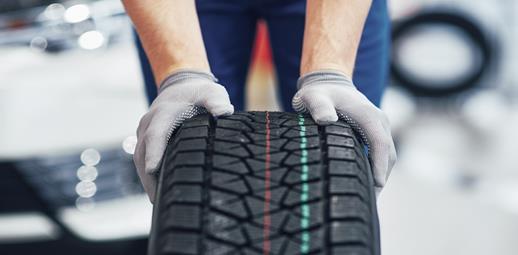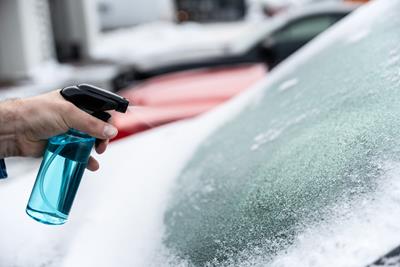
We all dread a tyre puncture, so it’s important to keep a close eye on the condition of your car tyres.
To help you do so, we’re sharing some of the basics about maintaining and changing your tyres.
Easy As Hack
If you need to find out what size tyre you need, look on the side of the tyre itself or in your car’s handbook. The collection of numbers and letters will tell you the width of the tyre, the aspect ratio, the diameter of the rim, how much it can carry and what speeds the tyre can cope with.
At A Glance
|
1. A lack of knowledge around car tyres could put you at risk on the road 2. Tyres should be checked at least once a month 3. From size to type, here’s what you need to know about car tyres |
When should I change my tyres?
According to safety group TyreSafe, tyres should be checked at least once a month, and before any long journey.
You should look at the tread depth, overall condition and air pressure. Don’t forget to check the standard of your spare tyre if you have one.
The legal minimum for a tyre’s tread depth is just 1.6mm , but only 42% of motorists know this .
To keep you safe on the roads, you should start looking to replace tyres once the depth drops below 3mm. New tyres tend to come with depth of around 8mm, though this will vary between models.
Keep a closer eye on your front tyres – they’ll wear at a greater rate than those at the back as they play a bigger part in accelerating, steering and braking.
What size do I need?
To find out what size tyre you need, look on the side of the tyre itself or in your car’s handbook.
The collection of numbers and letters might seem confusing at first, but they will tell you the width of the tyre in millimetres, the aspect ratio (basically, how high it is compared to its width), the diameter of the rim, how much it can carry and what speeds the tyre can technically cope with.
So, for example, a tyre might have the following on the side: 205/55 R16 91W.
From this, you can tell that it has a width of 205mm, an aspect ratio of 55, and that the wheel will fit a tyre with a diameter of 16 inches. See this helpful graphic from Parkers.
Unfortunately, you’ll need to consult the official load and speed indices to decode that last part ‒ there is no simple, memorable formula.
Seasonal vs all-weather
One thing to consider when choosing which tyres to go for is the time of year.
Most cars are fitted with standard, summer tyres, which operate at their best in the dry, humid months of the year, but are also fine in the wet winter months.
But if you’re changing your tyres over the winter period, then you could opt for specialised winter tyres, which are designed to deal more comfortably with very cold weather, generally of below seven degrees.
The tread is slightly different, which helps them improve the traction when it’s a bit slippery due to standing water, snow or ice.
TyreSafe recommends having winter tyres fitted between October and March, though there is no legal requirement to do so in the UK.
It is worth switching back to summer tyres once the temperatures pick up, though, as winter tyres wear more quickly during the warmer months and don’t perform as well.
There is also the middle-ground of all-weather tyres (which have a 3PMSF marking on them ). Most manufacturers say these offer better performance than standard tyres when it’s wet and slippery, but don’t age or drop off in performance during the summer months, as winter tyres do.
You get what you pay for
The cost of tyres can vary enormously but you essentially get what you pay for. Economy class tyres are cheaper and do not offer the best performance. More expensive premium tyres, normally associated with big, recognisable brand names, offer much higher performance and quality.
So, if you opt for a premium tyre, chances are you’ll get far better performance out of them, as well as a longer lifespan.
What about run-flat tyres?
Having a tyre give out on you while driving is not only a nuisance, but dangerous too.
That’s where run-flat tyres come in. As the name suggests, they are designed so that you can keep moving even if you develop a puncture. The tyre has a reinforced sidewall, which essentially means that the tyre doesn’t disintegrate if you do get a hole. You can then travel to a safe place to change it.
Generally, you shouldn’t travel for more than 50 miles or at above 50 miles per hour on a run-flat tyre with a puncture.
It’s also worth remembering that these tyres are most suitable for vehicles that have a tyre-pressure monitoring system, so that you know when they develop a puncture or are deflating.
Original article written 24th September 2021, updated 13th November 2023
Protect yourself on the roads with car insurance that’s Easy as Ageas.


